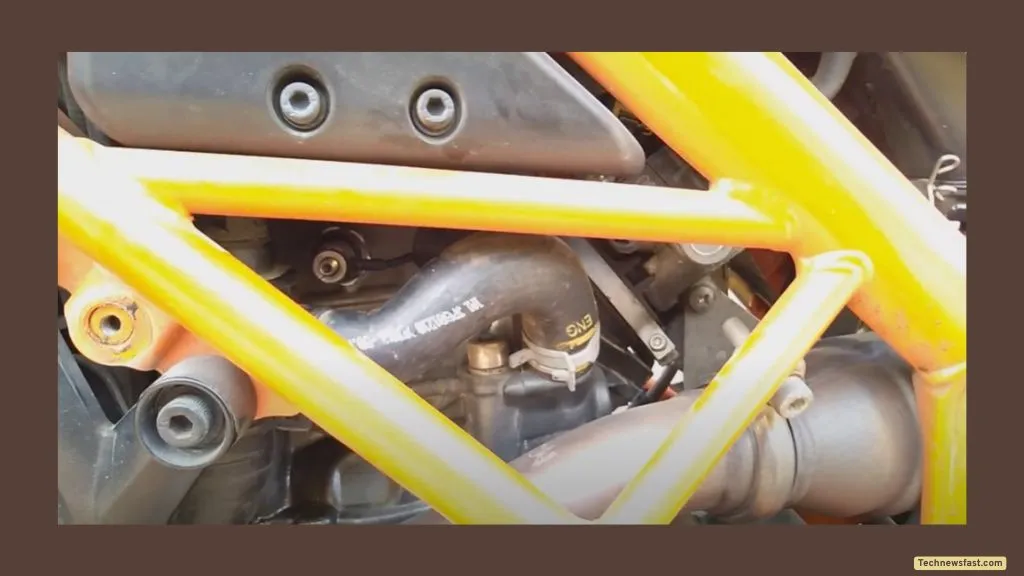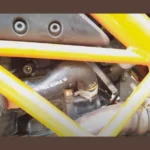Low engine oil pressure warning lights can make any motorcycle owner nervous. Seeing that little red oil can on your dashboard right after starting your Pulsar AS200, NS200, RS200, or even Yamaha R15, KTM Duke, or Harley? It’s a warning to act fast before risking serious engine trouble.
I’ve spent years riding and troubleshooting bikes, and I know just how confusing these warning lights can be. I’m breaking down everything you need to know about what that light means, how to fix low engine oil pressure in a bike engine, and how it plays out across bikes like Yamaha, Honda, and Harley. Whether you’re after a quick answer, hunting for fixes on Reddit, or want to know how to check things yourself without a mechanic, you’ll find the information you need here.
What Is the Low Engine Oil Pressure Warning Light?
That oil pressure light isn’t just annoying—it’s the engine’s way of telling you that something’s not right. In bikes with strong engines (and honestly, in all motorcycles), good oil pressure keeps everything running cool and smooth.
When your bike’s engine is switched off or the key is set to “on” but the engine isn’t running yet, you’ll usually see this light. That’s totally normal. But the light should disappear once the engine starts running. If it stays on, it means the bike isn’t getting enough oil pressure.
- Pulsar NS and RS series (AS200, NS200, RS200, 220F)
- KTM models
- Yamaha R15, R1M
- Other racing or high-torque bikes
- Harley and Honda high-displacement engines
If that low engine oil pressure warning light sticks around, don’t ignore it. Letting the engine run without proper oil pressure is like running a marathon without water. The engine can overheat and get damaged, and repairs can get expensive.
Why Does the Low Oil Pressure Light Come On?
Low Engine Oil Level
One of the most common reasons for the low oil pressure warning is simple: the engine oil is too low. If there isn’t enough oil in the bike, the oil pump can’t create enough pressure. Without pressure, oil won’t flow to all the parts that need it, and friction starts to build up.
Symptoms of low engine oil in a bike:
- The warning light pops on, especially right after starting or during hard acceleration.
- The engine may sound rougher or hotter than normal.
Some bikes also have sensors that check oil quality. If you use the wrong grade of oil or skip a change, you might still see the warning even though there’s oil present.
Tip: Check your engine oil level on a flat surface (use the main stand), with the engine cool. Pull out the dipstick, clean it, reinsert it, and check the level. This simple step can prevent major headaches down the road.
Oil Pump Malfunction
The oil pump is the heart of your bike’s lubrication system. Its job is to push oil through the engine, making sure all those moving parts stay slick and cool.
If the oil pump starts failing, you might notice:
- The low engine oil pressure warning light is turning on and off randomly.
- Not enough oil getting to the engine head or block.
- Sometimes, there is no oil flow at all at higher RPMs.
Common oil pump problems:
- Internal parts (like gears) getting worn or damaged.
- Sludge, leftover metal shavings, or debris blocking flow.
- The pump is just wearing out with age.
If the oil pump can’t keep up, your engine isn’t getting the protection it needs.
Oil Filter Problems
The oil filter’s job is to pull out dirt and particles before they damage the engine. If the filter clogs or breaks, oil can’t flow freely, and the pressure drops.
Even something as simple as a clogged filter can trigger that warning. That’s why following your bike’s maintenance schedule for filter replacements is so important.
The Role of Sensors in Oil Pressure Warning
Oil pressure sensors, sometimes called oil pressure switches, act as the lookout guard in your engine. They usually sit near the engine block or head cover. Their job is to sense oil pressure and send that info to the dashboard.
Sensor Faults and Their Impact
But sometimes the problem isn’t oil or the pump—it’s the sensor or its wiring. Over time, grease, debris, or simple wear and tear can cause the sensor to malfunction.
Here’s what can happen:
- The low engine oil pressure warning light turns on even though the oil is fine.
- The light flickers on and off.
If you encounter this, check the sensor wiring first. I had a time when my own low oil pressure warning wouldn’t quit. Cleaning the sensor connectors solved it right away. Replacing a faulty sensor is an easy fix compared to tearing apart the engine.
When Sensor Faults Prevent Bike from Starting
Here’s where new bikes can be pickier. Bikes with carbureted engines (like older Pulsars or basic models) will still start even if the sensor is bad. The warning light just stays on.
But if your bike uses an ECM (Electronic Control Module), like on the Yamaha R15, KTM RC, or some Harley or Honda models, the computer is in charge. If the oil pressure sensor detects a problem (or thinks it does), the bike may not start at all. This is a safety feature to prevent major engine damage.
Quick Compare:
- Carburetor bikes: Will start with warning light on; check oil and sensor promptly.
- EFI/ECM bikes: May refuse to start if sensor shows fault; sensor must be fixed or replaced first.
How to Diagnose Low Oil Pressure Issues
Knowing how to fix low engine oil pressure in a bike engine starts here. Keep it simple and safe with these steps:
- Make sure the bike is on a flat surface using the main stand.
- Let the engine cool for a few minutes.
- Pull out the dipstick.
- Wipe it clean with a cloth.
- Reinsert it completely, then pull it out again.
- Look for the oil level—it should fall between the minimum and maximum marks.
Tip: Use an oil grade and brand recommended by your bike manufacturer. Wrong oil can mess up pressure and trigger unwanted warnings.
Inspecting Oil Pump and Oil Flow
If the oil is at the right level but the warning light is still on, suspect the oil pump.
- With the valve cover or top head cover open, start the engine briefly.
- You should see a steady flow of oil; if it’s barely trickling or you see metal bits, the pump might be clogged or worn.
Sometimes, debris from inside the engine ends up in the oil pump, blocking it up. If you notice oil getting to the top too slowly, bring the bike to a mechanic for pump inspection.
Testing or Replacing Oil Pressure Sensor
Check the sensor and its connector:
- Inspect the wiring for any corrosion or loose connections.
- Try cleaning the connectors.
- If the warning light stays on, replace the sensor.
Don’t ignore warning lights. They’re your engine asking for help.
Maintenance Tips to Prevent Low Oil Pressure Problems
Regular checks keep your engine safe and strong. Here’s how I keep my bikes running trouble-free:
- Check engine oil every week or before a long ride.
- Change oil after every 2,000-3,000 km or as your bike’s manual says.
- Use oil of the proper grade for your bike—ask your mechanic if unsure.
- Replace the oil filter during every oil change.
- Inspect the oil pressure sensor and clean its connector every few months.
- For hot climates or high RPM riding, check oil level more often.
When to Take Your Bike to a Mechanic
Some problems need a professional’s touch, especially if you notice any of these:
- The low oil pressure warning light stays on even after topping up oil.
- The light blinks or comes and goes with no obvious reason.
- Metal flakes in the oil or a gritty feeling on the dipstick.
- Oil isn’t reaching the head cover when checked.
- You’ve replaced the sensor and checked wiring, but the light won’t quit.
Conclusion
Low engine oil pressure warning lights mean your bike needs attention. Whether it’s low oil, an oil pump problem, the wrong oil choice, a clogged filter, or just a faulty sensor, you want to solve it quickly.
Read also.








